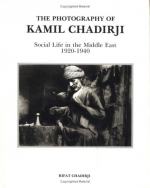|
This section contains 644 words (approx. 3 pages at 300 words per page) |

|
Between the 1930s and 1960s, U.S. Route 66—known affectionately as "America's Highway" and the "Mother Road"—defined the culture of the American automobile. The 2,400-mile-long roadway ran through the American Midwest and Southwest, extending from Chicago, Illinois, to Los Angeles, California. Unlike regional roads that began and ended at specific destinations, Route 66 followed a meandering path between the two cities. Leaving Chicago, its course was generally southerly, linking hundreds of cities and small towns in Illinois, Missouri, Kansas, Oklahoma, Texas, New Mexico, Arizona, and California.
The roadway was assigned the numerical designation "66" in 1926. It quickly became the favored thoroughfare for truckers, who relished driving along the flat Southwestern prairie and through its temperate climate. During the Great Depression (1929–41; see entry under 1930s—The Way We Lived in volume 2), Route 66 was the major pathway leading Dust Bowl farmers who had been uprooted by soil erosion and the resulting...
|
This section contains 644 words (approx. 3 pages at 300 words per page) |

|




